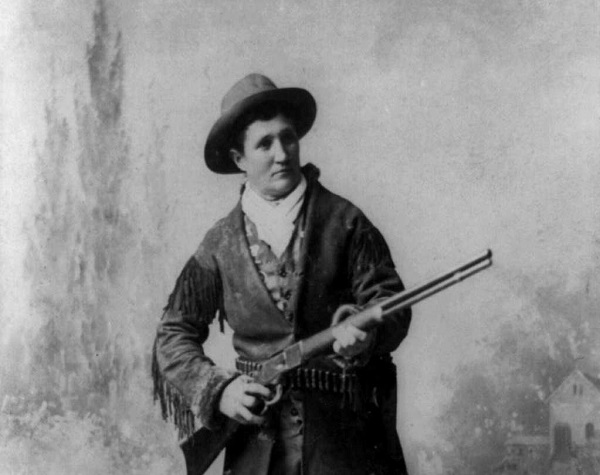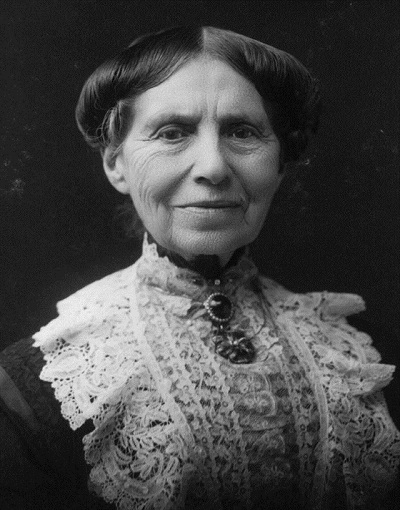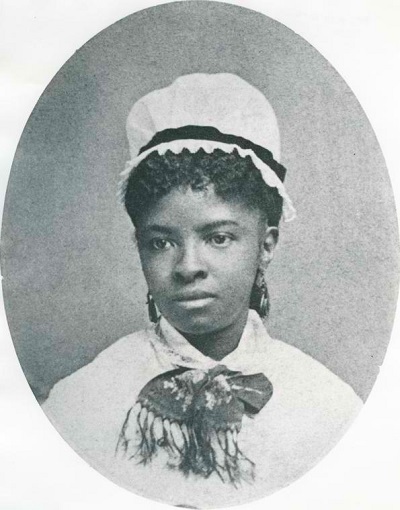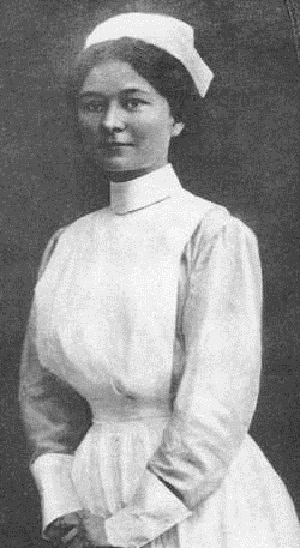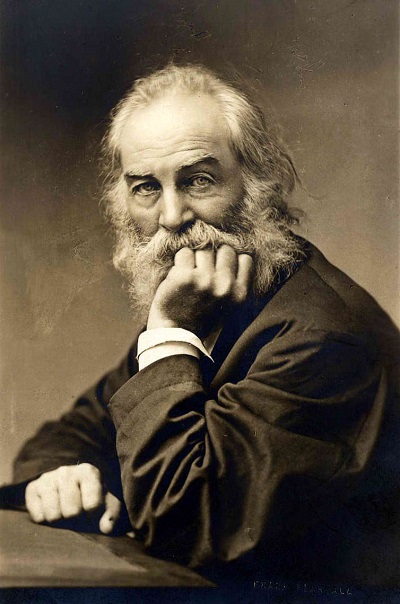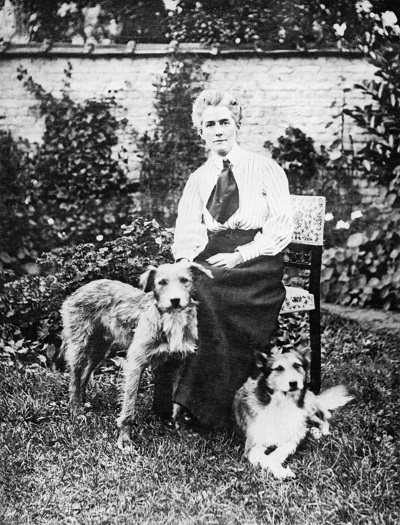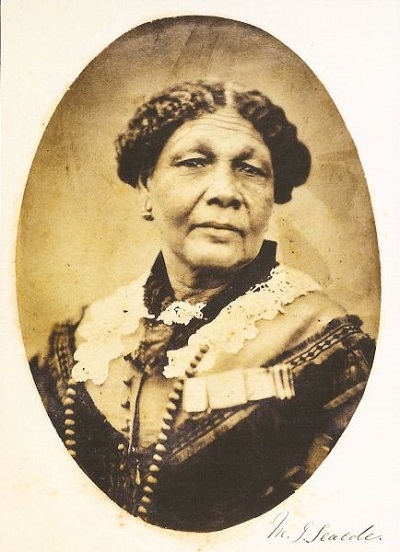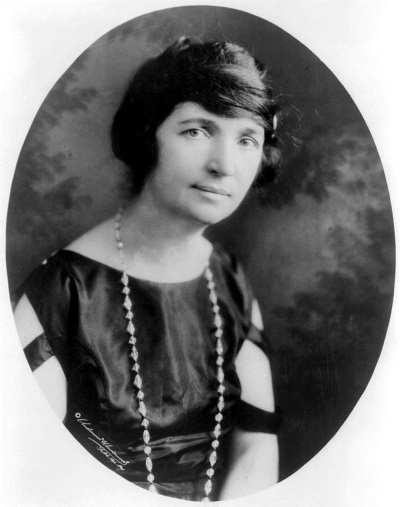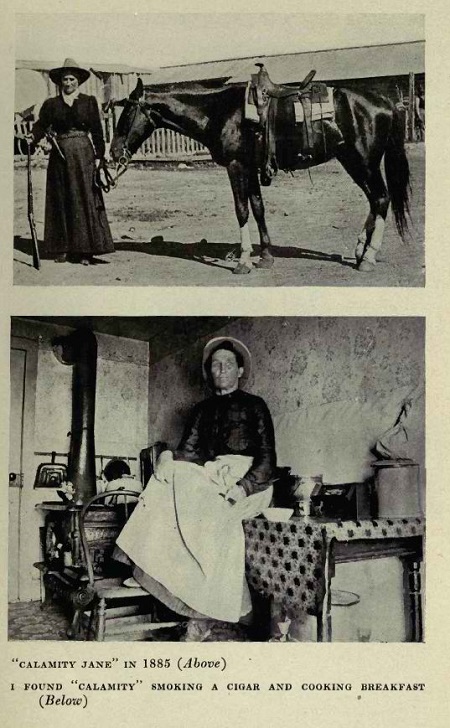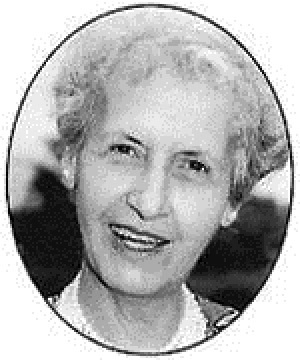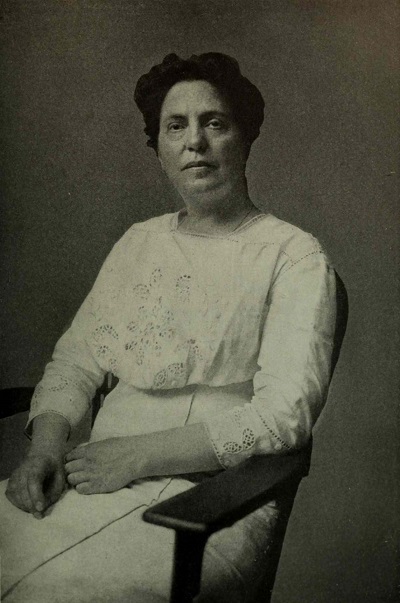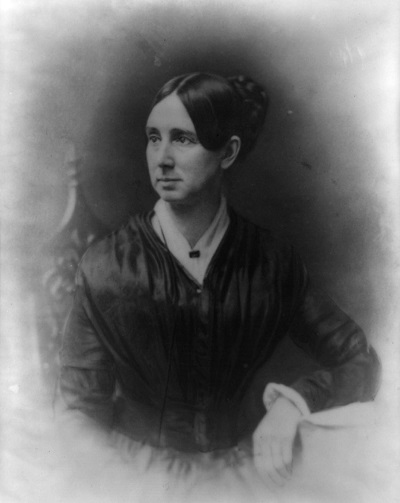Most nurses have gone through the process of sitting down at a nursing history class and remembering the names of people who changed the world of nursing. If you know Florence Nightingale, founder of the nursing profession, then you must know what I’m talking about.
Also Read: 5 Modern Nursing Heroes Who Make You Proud To be A Nurse
There are other lesser-known yet equally inspiring nurses in history that we must know about, and here are 12 of them:
1. Clara Barton.
Born in Massachusetts in 1821, Barton had always been helpful even while she was growing up. Working as a teacher for several years had taught her how to become a very responsible and caring woman.
Eventually, she started her own school in New Jersey in 1853. When she moved to Washington D.C. the next year, she worked as a clerk in the Patent Office. They wanted to pay her less because she was a woman, but she was aware of her rights and demanded to be paid a wage equal to what they were paying the other male clerks.
When the Civil War started, she immediately perceived that people needed help so she convinced government leaders to allow her to bring medical supplies and offer voluntary medical services to the soldiers in need. She asked people for help through donations, and she was able to utilize bed sheets and towels as bandages for wounded soldiers.
A few years after the war ended, Clara visited Europe where she was introduced to a broader scope of service through the Red Cross in Geneva in Switzerland. When she returned to America three years later, she began to actively work on getting a Red Cross established in the United States.
Eight years later, she founded the American Red Cross, serving as its President for more than two decades. The American Red Cross used to only help soldiers who needed medical assistance, but Clara realized that other people also needed help when disasters occurred, and this is why we see Red Cross at work whenever help is needed.
Aside from her passion to help other people, she was also interested in other fields like civil rights, education, prison reform, women’s suffrage and spiritualism.
2. Mary Eliza Mahoney.
Being the first African-American nurse to study and work professionally in the United States, Mary Eliza inspired a lot of people to be tough and to fight for equality.
Born in Dorchester, Massachusetts in 1845, she grew up dreaming of becoming a nurse. When she began working at the New England Hospital for Women and Children, she did not start working as a nurse. Instead, for more than fifteen years, she worked as a cook, janitor, washerwoman and a temporary nurse’s aide.
When she turned 33 years old, she entered a 16-month Nursing Program at the New England Hospital for Women and Children, which included lectures and actual patient care. Out of 42 students, only four of them passed the program. She became the first ever African American in history to earn a professional nursing license when she received her nursing certification in 1879.
Mahoney served as a private care nurse for the next 30 years, and worked across the U.S Eastern Seaboard. She even served as the director of the Howard Orphan Asylum for black children in Long Island, New York. In 1896, she joined the primarily white Nurses Associated Alumnae of the United States and Canada (later known as the American Nurses Association).
More than a decade later, she co-founded the National Association of Colored Graduate Nurses (NACGN) in New York because she felt the slowness of the Nurses Associated Alumnae of the United States and Canada in accepting black members. Mary Eliza started to become widely recognized as a pioneer who opened the door of opportunity for many black women who were interested in the nursing career.
In 1925, she died at the age of 81 because of breast cancer.
3. Helen Fairchild.
Although she had a very short career as a nurse, she still became one of the most famous nurses in history because of her letters describing nursing during World War I.
Born in 1885 in Milton, Pennsylvania, Fairchild spent her younger years working on their family farm. In 1913, she graduated from Pennsylvania Hospital and volunteered as a nurse when the United States of America entered the war in April 1917. The Pennsylvania unit included 64 nurses and Helen was stationed at British No. 16 (later known as Pennsylvania Base Hospital No. 10).
She was then assigned to Casualty Clearing Station No. 4 at Poperinghe in July, where she had to take care of thousands of casualties. After some time, she died due to exposure to mustard gas and stresses of combat.
4. Walt Whitman.
Born on May 31, 1819 in West Hills, New York, Whitman started working as a journalist in 1855 and self-published the first edition of Leaves of Grass. During his writing career, he continued to refine the volume and was able to publish several more editions of the book.
When the Civil War started, he visited the wounded at New York area hospitals, and in December 1862, flew to Washington D.C. to take care of his brother who had also been wounded in the war.
Whitman started his career as a male nurse in the battle zone at Fredericksburg, Virginia, and was moved by the suffering of the wounded men. When he came back to Washington, D.C., he was put in charge of a trainload of casualties who had been transferred to hospitals in the capital.
He wandered among the patients and wrote their messages to their families, while comforting them. He then decided to work in the hospitals during the war, claiming that he had learned so much from the soldiers more than they could learn from him.
5. Edith Cavell.
Born in Swardeston, England in 1865 to a poor family, Cavell knew that she wanted to have a life that would mean something to other people.
When she turned twenty years old, she became a nurse, and was appointed the matron of the Berkendael Medical Institute in Brussels, Belgium in 1907. She worked very hard to improve the standards in hospitals, making sure that the nurses provide the patients with quality care they deserved. She treated human life equally and never discriminated against any wounded soldier, Allied or German.
Cavell started her own medical journal and became highly in demand. She then joined the Red Cross, and her hospital, the Berkendael Medical Institute, was redeveloped into a military hospital.
She instructed her nurses to care for all wounded men, regardless of their nationality or race. After some time though, the Germans announced that any Allied soldier who wouldn’t give up would be shot. Allied soldiers who were wounded and starving started coming to Cavell’s hospital for help.
Cavell did not turn any soldiers away. Instead, she hid them and took care of them. She even went as far as procuring money and faking documents for them to make it back to England.
Unfortunately, the Germans found out about her actions and arrested her. She was sentenced to death when she confessed to having hid the Allied soldiers. She never felt sorry about what she did, instead, she felt proud for standing up for the principles that her parents taught her as a child.
6. Mary Breckinridge.
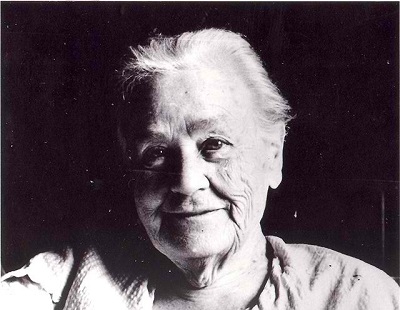
Being a daughter of a US Congressman and a granddaughter of the Vice President of the United States, Mary was lucky to had been raised in wealth and high society.
She was given the chance to travel extensively when she was young. She lived both in Russia and Western Europe during her teenage years, and attended outstanding schools. When she returned to the United States, she enrolled for two years of study at Miss Low’s finishing school in Stamford, Connecticut.
After a few years, Breckinridge got married, but was soon widowed in 1906. Because of her loss, she got inspired to pursue a nursing career and began studying at the St. Luke’s Hospital Training School, New York in 1907.
Sometime after graduating in 1910, she got married for the second time. She had two children who both lived rather briefly. When her children died, she divorced her second husband and was motivated to devote her life in improving health of other people.
She traveled to Washington D.C. where she was able to care for people who were ill because of the influenza epidemic. After a year, she joined the Comité Americain pour les Régions Dévastées de France (American Committee for Devastated France). She then asked permission to organize a visiting nurse program, and two years later, with her program being a success, she was already supervising a number of women who were trained as both nurses and midwives.
At that time, there were no schools of midwifery in the United States. When she returned home from France in 1921, she knew that she had to start one. She worked hard to become a certified midwife, and in 1925, announced that she was bringing a nursing and midwifery service to Appalachia. Summer that year, The Kentucky Committee for Mothers and Babies (changed to the Frontier Nursing Service in 1928) was established.
She died at the age of 84 in 1965, and left indelible marks in the history of Nursing.
7. Mary Seacole.
Born in 1805 in Jamaica, Seacole was the daughter of a Scottish soldier and a free black Jamaican woman who was skilled in traditional medicine
Although they were “free”, Mary’s family had only a few civil rights. They were not allowed to vote, hold public office or enter the professions.
She grew up to be a vast traveler. She was able to visit other parts of the Caribbean, including Cuba, Haiti, and the Bahamas, as well as Central America and Britain. Her travels taught her more knowledge about traditional medicine.
She was in London in 1854 when she heard about the adversities of the soldiers in the Crimean War. She then went to Crimea where she helped distribute remedies for cholera and dysentery in military hospitals. She also visited the battlefield to nurse the wounded, and later became known as ‘Mother Seacole’.
Seacole was very ill and impoverished when she returned to England. Her difficulties were made public by the media. In 1857, a benefit festival was established to raise funds for her. She died on May 14, 1881.
8. Margaret Sanger.
Born in Corning, New York, in 1879, the young Sanger managed to take care of her five younger siblings after her mother’s death.
Despite the hardships, she was still able to complete studies at a private school and soon entered a nursing program at a local hospital. While working as a nurse and midwife in the poorest areas of New York before World War I, she witnessed how women were deprived of good health. She was greatly dismayed by the deaths caused by self-induced abortions.
The injustice of suppressing contraceptive information inspired her to defy the church and the state. It was in 1914 when she launched a feminist monthly called The Women Rebel which advocated birth control. She then spread more information about sexuality through a series of articles called “What Every Girl Should Know”, which included topics such as menstruation and sexuality in adolescents.
Soon, she was able to establish and launch the first family planning clinic in the United States, which was in Brooklyn, but was arrested for creating public nuisance. Her case was later dismissed, and she continued her advocacy by establishing sex counseling centers and organizing the first international population conference.
Her battle with law elaborated her cause and won doctors the right to give out information about birth-control to their patients. In 1939, she was able to establish the Planned Parenthood Federation. Years later, she got generous financial support from wealthy supporters to fund scientists to speed up the advancement of contraceptives such as ‘the pill’. She died at the age of 87 in 1966.
9. Martha Jane Cannary.
Also known as Calamity Jane, Cannary was born in Princeton, Missouri in 1852. She grew up loving adventures and the outdoor. She especially loved horses and began riding at a very young age.
When her parents died, Cannary moved to Wyoming to start her independent adventures. She wore men’s clothes and did jobs that were usually reserved for men. She disguised herself as a man to be able to accompany soldiers on expeditions, including the 1875 expedition of Gen. George Crook against the Sioux.
She nursed victims of a smallpox epidemic in 1878, still dressed as a man. She was called ‘Calamity Jane’ because she would threaten a calamity to any man who bothered her. Her alcoholism and fighting caused problems, and after she was fired in 1901, she retired to Deadwood. Two years later, she died in 1903, but her legend continued in movies, books and television.
10. Florence Guinness Blake.
Florence was not only a nurse and an advocate, but was also a scholar, teacher and a researcher. Born in Wisconsin on November 30, 1907, Blake grew up encouraged by her family to pursue a career in nursing.
She graduated in 1929 from the Michael Reese Hospital School of Nursing, and later on completed an undergraduate degree in Colombia University in 1936. For several years, she taught pediatric nursing in China, and then earned a master’s degree from the University of Michigan in 1941.
By 1946, Blake established and directed the graduate program in advanced nursing care of children at the University of Chicago. She also wrote outstanding textbooks and received a number of awards. Being a first in advanced clinical education, she left a legacy of knowledge in nursing that, until today, still influences the care of children all over the world.
11. Lillian Wald.
Born on March 10, 1867, in Cincinnati, Ohio, Wald studied in an expensive private school because her father’s income was decent. She learned to speak French and German, and tried to apply to Vassar College in 1883, but to no avail, because she was too young.
She traveled instead, and was able to get a job as a newspaper correspondent. When her sister became ill, she instantly got interested in nursing and attended New York Hospital Training School for Nurses, where she received basic training. She became an active advocate for civil rights and by 1909, she helped establish the National Association for the Advancement of Colored People. She even attended protests against the film Birth of a Nation, which celebrated the Ku Klux Klan and its white supremacy principle.
Wald was also a member of the Woman’s Peace Party (WPP) and helped establish the Women’s International League for Peace and Freedom (WILPF) after the war. She campaigned for socialist candidates after the war, and was linked with left-wing radicals like Emma Goldman, which caused her to become a target of the Red Scare campaign in 1919. She died in Connecticut in 1940.
12. Dorothea Lynde Dix.
Born in Hampden, Maine in 1802, Dix moved to Boston with her grandmother when she turned 12, and then to Worcester, Massachusetts with her aunt. At age 14, she started teaching in school.
When she went back to Boston in 1819, she decided to establish the Dix Mansion, which was a school for girls, along with a charity school that the less fortunate girls could attend for free.
In 1841, her life changed when she started teaching Sunday school at the East Cambridge Jail, which was a women’s prison. She learned about the appalling treatment of the prisoners, especially those with mental illnesses. After trying to help the prisoners by immediately going to court to secure an order for improvements, she began to travel and research about the conditions in prisons and poorhouses.
In 1856, Dix returned to the United States. When the Civil War broke out in 1861, she volunteered and was assigned to be the superintendent of nurses. After the war, she resumed working on behalf of the mentally ill.
In 1870, she contracted malaria and was compelled to cease traveling although she continued to write. She died on July 17, 1887.
Also Read: 50 Vintage Photos of Nurses Being Awesome
Your Turn
Are there other badass nurses in history that you look up to? Let us know! We would love to hear about them!
About the Author: Mary Elizabeth Velarmino Francisco earned her Bachelor of Science in Nursing Degree from the Ateneo de Zamboanga University, Philippines. She is always happy to share her passion for writing and blogging. With coffee running through her veins, she enthusiastically battles each day, one article at a time.


